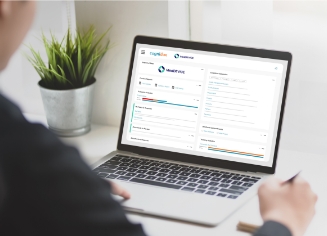.webp?width=750&name=shutterstock_698366749%20(1).webp)
For most high tech companies, developing profitable new products is their entire reason for being.
Innovation is the reason they exist in the first place and without the next great idea to follow up on an initial success they can all too easily lose momentum, with their original product suite drifting into obsolescence.
.webp?width=750&name=8%20essential%20succcess%20drivers%20in%20new%20product%20development%20process%20opt%20(1).webp)
8 essential success drivers in New Product Development
1. A successful new product idea is obviously one that delivers unique value and benefits to a customer.
It should be strongly differentiated and with novel features that answer user needs not adequately addressed by other products on the market.
2. The success of a new product is often a function of how accurately and perceptively user needs have been captured as part of the ideation process.
Putting the time and effort in up front to understand in detail what customers really need, how existing solutions are failing them and where your solution could make the difference, can represent the competitive advantage that will drive adoption and success in the market place later on. Making the completion of this due diligence part of your formal acceptance criteria for pursuing a project can save you wasted money and effort in the long run.
3. The due diligence around customer needs that you put in at the beginning of the process is worthless unless it actively informs the process as a whole.
The ‘voice of the customer’ (VoC) should be built into the ideation stage and every part of product development thereafter. In the Agile development methodology, a Product Owner is appointed to be the embodiment of this voice and has a major role to play in all the decisions that are made surrounding it. But the VoC can and should be formally and systematically captured in the documentation that drives the product development process forward. This means researched and documented user needs gathered and translated into design requirements and then engineering specifications. The user needs can then be checked at formal review ‘gates’, and the end product validated against them at the end of the process.
4. Clear, focused product and project definition early on, is a must.
The precision and clarity with which user requirements and specifications are articulated in the documentation, the detail of the planning you do and the way these are made available to a team as a whole, will make a significant difference to the velocity you can achieve.
5. Avoiding scope creep and ever changing specifications mean higher success rates and faster times to market.
Finding a formal process for turning user needs into agreed and documented requirements and specs - choosing and prioritising essentials, ‘nice to haves’ and items to include in future product iterations - is a clear way of defining what ‘done’ will look like and focusing a team on getting there quicker. Putting phase gates in place, where cross functional teams meet at regular and agreed intervals, to track progress on deliverables will help keep a project on time, on track and on budget.
The value of a Document Management System for sustainable product development
6. Spiral development.
An iterative approach that can gather pace quickly as a concept takes shape and then is approved for development. This is a classic process of: build, test, get customer feedback, and revise. This approach of putting something in front of the customer as early and as cost effectively as possible, often helps a business get a product right. But you’ve got to have the tools and procedures in place to manage all the inputs effectively and the stop/go decisions that make this ‘fail fast’ approach a success for everyone.
7. Speed is of the essence.
But not speed at the expense of clarity of ambition and quality of execution. Letting developers unilaterally dictate the pace and direction of a project can lead to delays and dead ends, too much emphasis on ‘delivering’ through strict and unbending Project Management can mean developers lose connection with the wider objectives of a project and their creative spark. Having said that, a product that meets a new and urgent customer need, that comes on the market at just the right time is clearly a recipe for success.
8. Finally, a properly executed launch is central to the fortunes of a new product.
In high tech product development this can mean collating and publishing lots of technical collateral for use by clients often on a highly bespoke basis. Ensuring you have a repeatable and error free method of pulling all this together for each individual client, product release and update, is the key to keeping happy customers and minimising corrections or costly problem resolution later on.



%20(1).webp?width=133&height=76&name=ISO%20IEC%2027001%20(1)%20(1).webp)